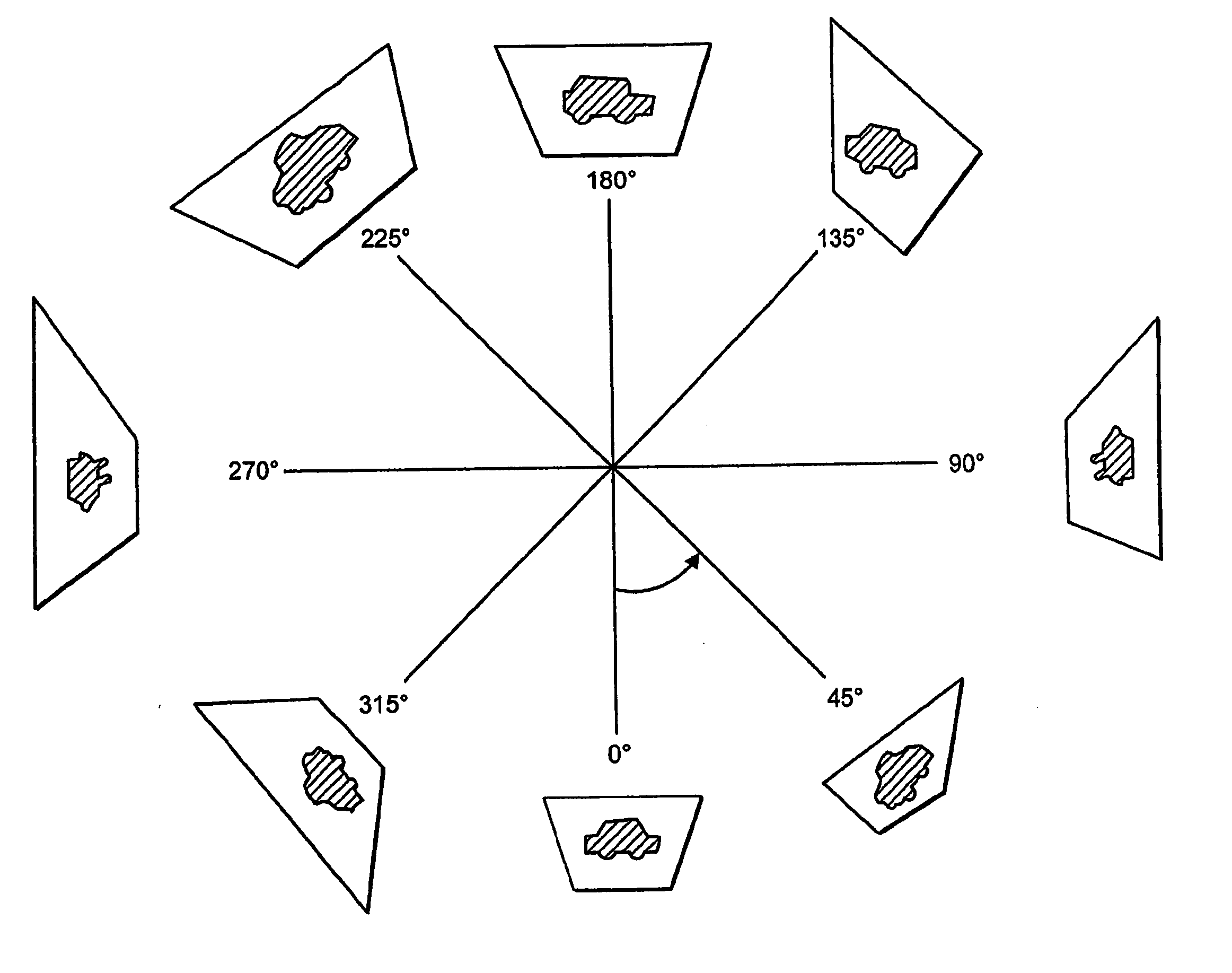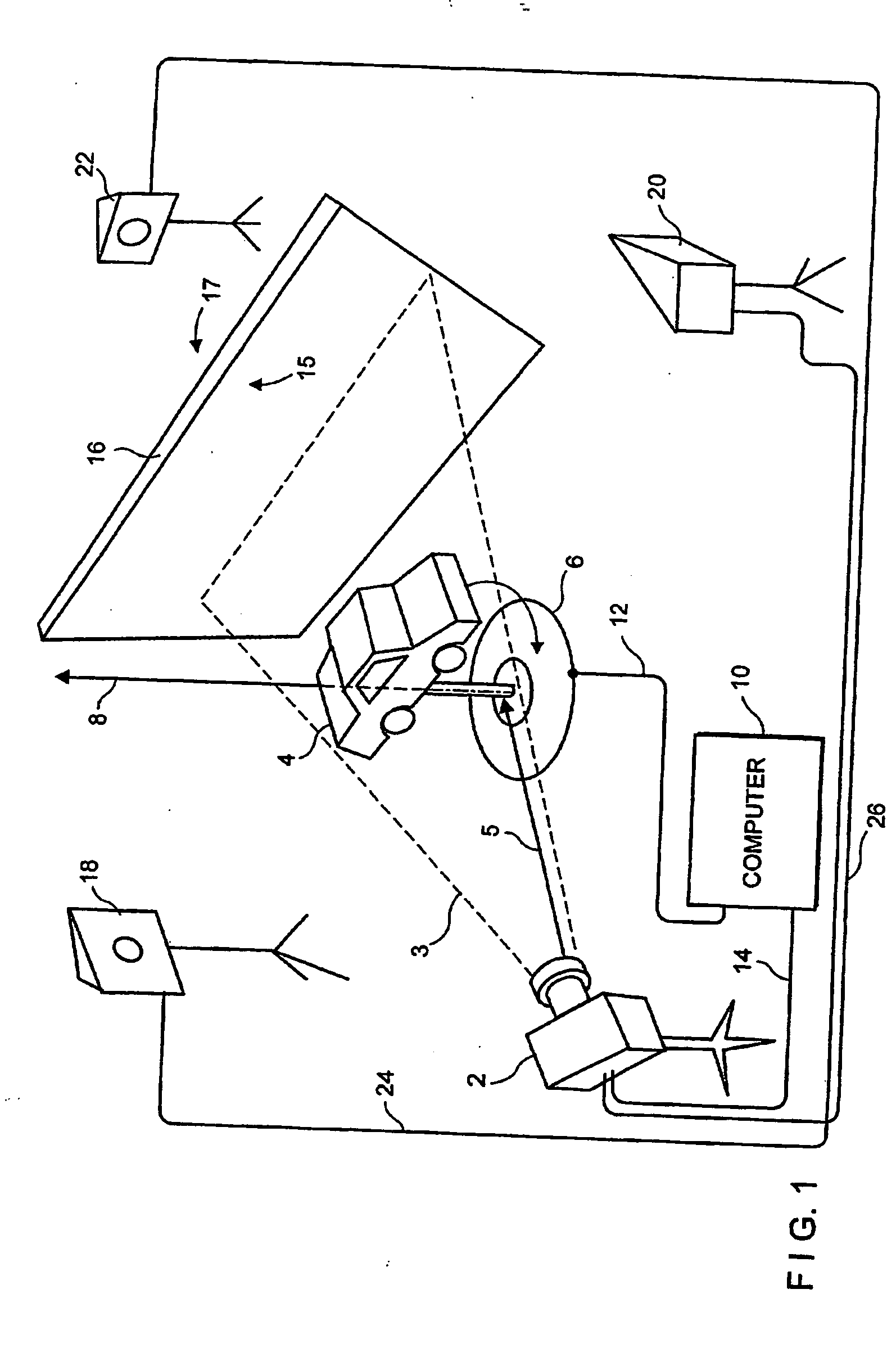System and method of three-dimensional image capture and modeling
a three-dimensional image and modeling technology, applied in the field of three-dimensional (“ 3d”) measuring systems and), can solve the problems of increasing computation time, not well-suited to mesh constructions, and reducing the overall accuracy of models
- Summary
- Abstract
- Description
- Claims
- Application Information
AI Technical Summary
Benefits of technology
Problems solved by technology
Method used
Image
Examples
embodiment
6. Generating 3D Coordinates (Alternative Embodiment)
[0409] Once the polygonal shape building module 1668 has generated vertices for each object-related shape in a silhouette mask image, the 3D coordinate module 1670 determines a 3D X, Y, Z real world spatial coordinate for each of those vertices. This module also associates those 3D coordinates with each vertex of the polygon so that for each vertex of the polygon, the procedure stores the values of the X, Y, Z coordinates as well as the x, y location of the vertex in the silhouette mask image object (e.g. 1604).
[0410] In the exemplary embodiment, the 3D coordinate module 1670 of the present invention determines 3D coordinates by a triangulation process. An example of a similar triangulation process is described in U.S. Pat. No. 6,044,170, the entire disclosure of which is expressly incorporated herein by reference.
[0411] To calculate X, Y, Z coordinates, the 3D coordinate module 1670 uses values for the focal length L of the cam...
PUM
 Login to View More
Login to View More Abstract
Description
Claims
Application Information
 Login to View More
Login to View More - R&D
- Intellectual Property
- Life Sciences
- Materials
- Tech Scout
- Unparalleled Data Quality
- Higher Quality Content
- 60% Fewer Hallucinations
Browse by: Latest US Patents, China's latest patents, Technical Efficacy Thesaurus, Application Domain, Technology Topic, Popular Technical Reports.
© 2025 PatSnap. All rights reserved.Legal|Privacy policy|Modern Slavery Act Transparency Statement|Sitemap|About US| Contact US: help@patsnap.com



